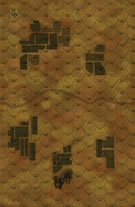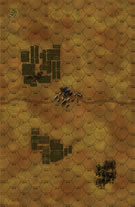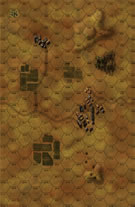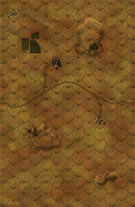|
Kursk - South Flank Scenario 13: Where Have All the Soldiers Gone? Variant Panthers #3 |
||
|---|---|---|
| (Attacker) Germany | vs | Soviet Union (Defender) |
| Formations Involved | ||
|---|---|---|
| Germany |  |
2nd SS "Das Reich" Division |
| Germany |  |
LSSAH Panzer Regiment |
| Soviet Union |  |
183rd Rifle Division |
| Soviet Union |  |
237th Tank Brigade |
| Soviet Union |  |
5th Guards Tank Corps |

| Total | |
|---|---|
| Side 1 | 1 |
| Draw | 0 |
| Side 2 | 0 |
| Overall Rating, 1 vote |
|---|
|
5
|
| Scenario Rank: --- of 913 |
| Parent Game | Variant Panthers |
|---|---|
| Historicity | Alt-History |
| Date | 1943-07-07 |
| Start Time | 07:04 |
| Turn Count | 30 |
| Visibility | Day |
| Counters | 277 |
| Net Morale | 1 |
| Net Initiative | 2 |
| Maps | 4: 36, 37, 38, 39 |
| Layout Dimensions | 86 x 56 cm 34 x 22 in |
| Play Bounty | 246 |
| AAR Bounty | 171 |
| Total Plays | 1 |
| Total AARs | 1 |
| Battle Types |
|---|
| Inflict Enemy Casualties |
| Road Control |
| Urban Assault |
| Conditions |
|---|
| Entrenchments |
| Minefields |
| Off-board Artillery |
| Randomly-drawn Aircraft |
| Reinforcements |
| Terrain Mods |
| Scenario Requirements & Playability | |
|---|---|
| Variant Panthers | Base Game |
| South Flank | Maps + Counters |
| Introduction |
|---|
|
As the rest of the SS Lifeguard Division fought to secure the three fortified cities to the south, its Tiger company assisted SS Reich Division at the tip of the spearhead. If they could clear the Prokhorovka-Tomarovka road in conjunction with clearing Gresnoe, it would go a long way toward securing II SS Panzer Corps’ open left flank. Hopefully, it would also pressure Soviet 3rd Mechanized Corps, which was currently holding up XXXXVIII Panzer Corps and actually causing some of their units to fall back. |
| Conclusion |
|---|
|
After the Germans secured the towns along the Prokhorovka-Tomarovka road, forces had to be diverted from the drive on Komsomolets State Farm to deal with problems developing in areas already thought pacified. This blunted the spearhead, and when the Soviet 31st Tank Corps arrived the German advance faltered. At that point it appeared as if the advance would stall completely until a way could be found to free up some infantry. Many were left to ponder whether things might have gone better had so many men not been sacrificed at Stalingrad. |
| Additional Notes |
|---|
|
The Skoda Panther counters replace the PzIIIj or PzIVe and PzIVf2 tanks in this scenario. |
| AFV Rules Pertaining to this Scenario's Order of Battle |
|---|
|
| 7 Errata Items | |
|---|---|

|
All SS 75mm IG guns are direct fire weapons (black), not indirect (white). (Shad
on 2010 Dec 15)
|

|
The reduced direct fire value of the SS HMG is 5-5 in Beyond Normandy and Road to Berlin. (plloyd1010
on 2015 Jul 31)
|

|
The Units in Beyond Normandy were misprinted with a movement factor of 5. The movement factor should be 8. (rerathbun
on 2012 Mar 21)
|

|
Liberation 1944's counters are mislabeled 'PzIVF2.' The counter's ratings are correct (Armor 5, Move 8, DF 11-6, AT 6-8). (rerathbun
on 2014 Feb 14)
|

|
Should have direct fire value of 10-5 and an anti-tank value of 4-4. Values on the Kursk South Flank counter are for SPW-251/22. (plloyd1010
on 2015 Feb 17)
|

|
The reduced direct fire value in Kursk: Burning Tigers is 4-4. (plloyd1010
on 2015 Jul 31)
|

|
Kommissars never get morale or combat modifiers. Ignore misprints. (Shad
on 2010 Dec 15)
|
| Panther Pride | ||||||||||||
|---|---|---|---|---|---|---|---|---|---|---|---|---|
Scenario #3 of the Variant Panthers module is played using Scenario #13 of the Kursk:South Flank game. Option one was used here with the ten Pz.IIIj’s being substituted by six “Skoda Panthers” (Pz.42t) with the “rapid fire” option in play. Anti-tank weapons of both sides were considered “efficient” and had two shots per firing turn. The Soviets set up with HMG/INF protection of both towns on Board 38 and a flamethrower in the center of the larger town surrounded by foot units. The trail also received similar coverage, but not in as great strength. Some of the Soviet AT weapons were placed in entrenchments to attempt crossfire if German tanks advanced without recon. A number of units from the 183rd Rifle Division were also placed primarily on Map 39 with a few to support the placement of the 5th Guards Tank Corps on Map 37. This provided a strong reserve line since it was presumed that the Germans would eventually be able to gain the objective for town hex control on Map 38, so preserving control of the town on Map 37 was one of the Soviet keys to victory. The fields southeast and southwest of town were strongly garrisoned to counter the German routes of advance. The Germans have so many units that they advanced across a broad front using infantry with leaders for recon until the odds favored Hanomag and armored car recon advance. By Turn 8, the Germans had a strong position with their front about halfway across Boards 36 & 38 and had captured the Soviet Colonel, so command fell to the ranking Lt. Col. The town hexes on Map 38 were finally taken by the Germans on Turn 13 allowing the Germans to head north. German OBA and airstrikes assisted the German advance, while the Soviets received little benefit from their adjunct fire. Once the Soviet frontline in the south fell, the Germans moved quickly toward Maps 37 & 39, making sure to protect their control of road hexes on the bottom maps. Since the Germans need three objectives for a minor victory, assuming they keep control of the towns they have taken on Map 38, they need to clear the road on both Maps 38 & 39 and not lose more than 30 steps while doing so. Alternatively, they may control the town on Map 37 in place of either objective or control all objectives for a major victory. Beginning on Turn 14, the Germans pushed northward on both flanks to achieve success on the two remaining objectives, while step loss was scrutinized closely to insure that the step-loss objective was retained. By the halfway point in the game (Turn 15), the Soviets had lost 53 steps to only 12 lost by the Germans, and the Germans had moved the frontline to the junction of the north and south maps. The armor battle began in earnest at this juncture, as the Soviets began to feel the sting of the Tigers while the Germans also lost a Pz.IVh to combined fire form Soviet 57mm & 76.2mm units on the west flank. On Turn 20, the Soviets lost their last 85mm unit, which gave the Tigers a little more spoace to roam freely, although there was still some risk from the remaining T-34’s and two 76.2mm units. The Soviet reinforcements from the 237th Tank Brigade finally arrived on Turn 22 just as the Germans were closing on securing the road and ready to launch their attack on the town on Map 37. On Turn 26, it became apparent that the German thrust at the town on Map 37 had little chance of succeeding due to the Soviet defense, so the focus for the Germans became control of the north/south road. By that time the Germans had lost 26 steps, so German units on the west flank dropped back to avoid the fire from the town and the remaining Soviet 76.2mm unit stationed there. The fight to secure the road and prevent any further step loss became the German focus. On Turn 30, the last turn, the last Soviet unit that occupied the road was eliminated, and there were no others that could reach the road. The Germans had lost 28 steps at that point to 160 steps lost for the Soviets. Thus, the Germans reached three objectives (held all town hexes on Map 38, no Soviet units in the road and less than 30 steps lost) for a Minor German Victory. While this outcome did not quite match the historical one, it is a great scenario in terms of balance. The outcome was not decided until the final turn, and if one or two die rolls had gone the other way, the Soviets would have been winners. Did the variant Skoda Panthers make a difference? Quite possibly, as they were a formidable force in holding back a Soviet armor advance toward the road in the latter stages of the game due to their enhanced mobility and firepower. While one Tiger did lose a step (which was scored as three steps lost), the six Panthers remained in play and unscratched. |
||||||||||||
| 0 Comments |

 GrDa002
GrDa002 




























































